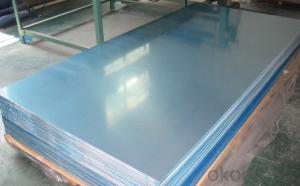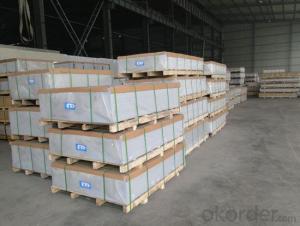Aluminum Sheets AA5052 Used for Constrcution
- Loading Port:
- Shanghai
- Payment Terms:
- TT OR LC
- Min Order Qty:
- 8 m.t.
- Supply Capability:
- 10000 m.t./month
OKorder Service Pledge
OKorder Financial Service
You Might Also Like
Item specifice
1.Structure of Aluminum Sheets AA5052 Used for Constrcution Description
Aluminum Sheets AA5052 Used for Constrcution has great ductility, heat conductivity, anti-corrosion and moisture resistance properties.
Aluminum Sheets AA5052 Used for Constrcution is widely used for electronics, instruments, lighting decoration, packing industry, house decoration, curtain wall, honeycomb-core panel, sandwich panel, aluminum composite panel and aluminum composite pipes.
2.Main Features of Aluminum Sheets AA5052 Used for Constrcution
a.Competitive price---We have our own mills and can produce mill finished aluminium coils, so we can control the production cost better.
b.Professional after-sale service---We have more than 15 years exportation experience and you need not worry about the exporation problems.
c.Fast delivery time---We can control the delivery time within 35 days.
3.Aluminum Sheets AA5052 Used for Constrcution Images
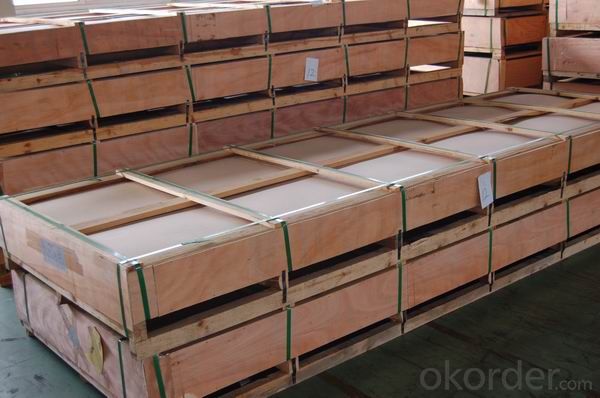
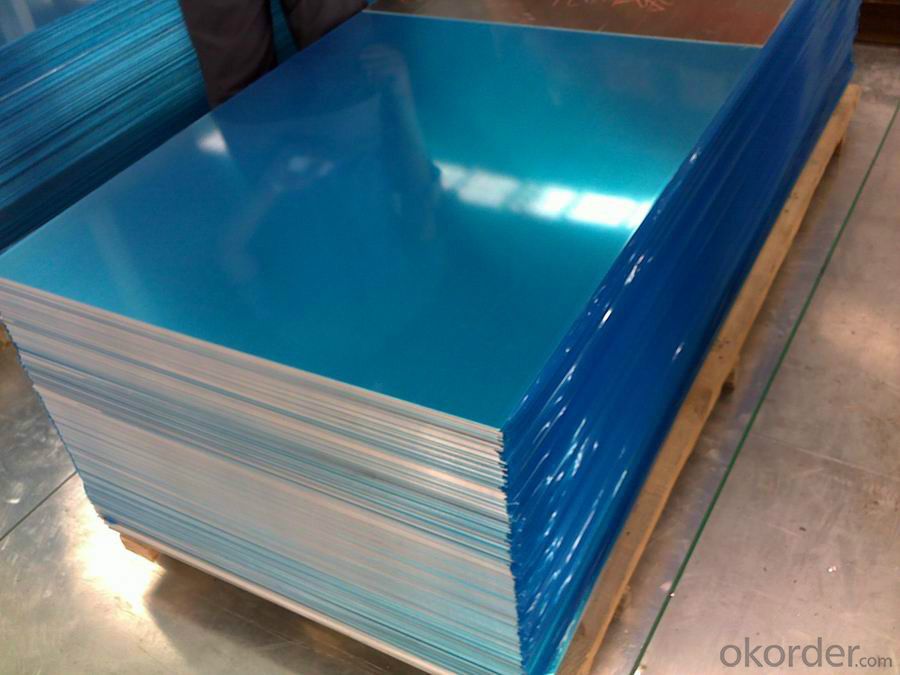
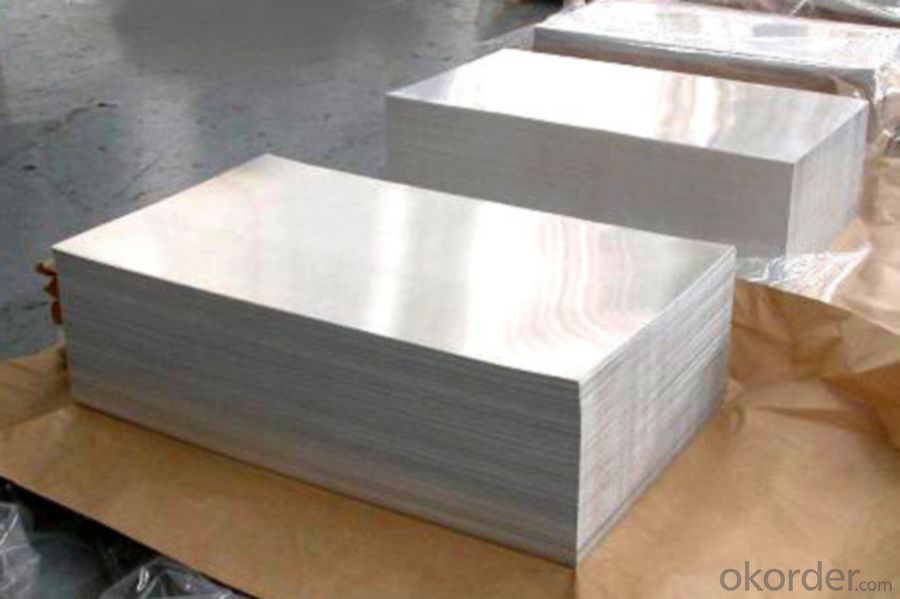
4.Aluminum Sheets AA5052 Used for Constrcution Specification
Alloy | AA5052 |
Temper | H14, H16, H18, H22, H24, H26, H32, O/F |
Thickness | 0.2mm -- 100mm |
Width | 30mm -- 1700mm |
Standard | GB/T 3880-2006,EN,ASTM,JIS |
5. FAQ of Aluminum Sheets AA5052 Used for Constrcution
A.What is the quality standard?
---Usually our standard is GB3880-2006
B. What is the largest width?
---It is 2300mm
C. What is the MOQ?
---Usually we can accept 80 tons.
- Q:What is the maximum size available for aluminum sheets?
- The maximum size of aluminum sheets can differ based on the manufacturer and specific demands. Nonetheless, aluminum sheets can typically be found in sizes of up to 4 feet by 12 feet (48 inches by 144 inches) or even larger. Industries such as construction, aerospace, and automotive manufacturing often utilize these bigger dimensions. It's worth mentioning that custom sizes can also be created to meet individual project requirements.
- Q:I use an aluminum chloride deodorant at night for hyperidrosis...I'm scared I may get senile dementia when i get older!!!!! can anyone give advice??? pls..i've been using it for 3yrs
- It is possible but there are still a lot of mysteries to the root cause of the illness. My grandmother suffered with it for many years and I wish there could be a cure as its a terrible way to end the life. I read this article to research about your specific question. Yes it does say that this aluminum chloride can increase the chances of it. I believe that my grandmother must have had it from years and years of eating canned goods and products that were stored in aluminum containers. And you will notice that more and more elderly people are increasingly suffering from this in their old age nowadays. I would check with my doctor and ask if there is some other type of deoderant or personal product that can be replaced for your health condition. Hopefully there is a solution for this. Read the following article about aluminum and Alzheimer's.
- Q:the amp setting when welding aluminum tig? and what color should the electrode feeder be bronze or chrome grey? u know the one u use with your hands
- Best electrodes to use for Aluminum welding is 1.5% lanthanum oxide (gold color code.). 2% zirconia (brown) or 2% thorium oxide (red) can also be used. Note that zirconia-doped electrodes should never be used for DC welding. A lot of welders like to quote offhand the rule 1 amp for every 0.001 inch of thickness. This applies to steel, stainless, and nickel alloys only. Due to the lower melting point, lower specific heat capacity, and higher thermal conductivity of of Al, this rule should NOT be used for Al! I recommend welding a test piece first with the same joint configuration and thickness of the part you intend to weld. Note that fillet welds require more current than butt welds or edge welds. Start out by using 2/3 amp per 0.001 of thickness, in other words, reduce the current of the above rule by about 30-40% . Make 3 test weld, then check to see if there's any visible penetration on the other side. If you don't see any through-pentration at all, increase the current by about 10-20 amps and test again.
- Q:Can aluminum sheets be used for solar panel frames?
- Solar panel frames can indeed be made from aluminum. The reason behind aluminum's popularity as a material for solar panel frames lies in its remarkable strength-to-weight ratio, resistance to corrosion, and durability. These qualities render it suitable for the task of supporting and safeguarding solar panels, which are often installed in outdoor settings. By providing structural stability, aluminum frames guarantee the longevity of solar panels by shielding them from elements like wind, rain, and snow. Moreover, aluminum is readily recyclable, making it an environmentally-conscious option for solar panel frames.
- Q:How does the thickness of aluminum sheet affect its formability?
- The thickness of an aluminum sheet directly affects its formability. Thinner sheets are generally more flexible and easier to bend or shape, making them more formable. On the other hand, thicker sheets are less malleable and require more force to bend or form, resulting in reduced formability.
- Q:Are the aluminum sheets suitable for manufacturing chemical storage cabinets?
- Indeed, chemical storage cabinets can be manufactured with aluminum sheets. Aluminum, being a robust and long-lasting material, exhibits corrosion resistance, thus making it an excellent choice for safeguarding chemicals. Its lightweight nature renders transportation and installation more convenient. Moreover, aluminum remains non-reactive with the majority of chemicals, thereby ensuring the safety of stored substances. In summary, the utilization of aluminum sheets offers a dependable and effective solution for the production of chemical storage cabinets.
- Q:There seems to be a load of buzz out there regarding the use of aluminum pots and pans. They apparently may cause Alzheimer’s or bone degeneration in women. I have some cast iron pans that I use when ever possible but they are not always practical. I’d like some of you kitchen pros to give me some sound advice regard the use of aluminum in the home kitchen. I know they are used in food service organizations.... I look forward to some informative replys.Thanks in advance.
- each thing you do in any given day would reason some style of maximum cancers. you may could be residing in a bubble to not be uncovered. of direction, the bubble could be produced from some style of plastic which of direction would desire to divulge you to 3 strand of maximum cancers besides.
- Q:Can the aluminum sheets be used for manufacturing food packaging?
- Indeed, the utilization of aluminum sheets in the manufacturing of food packaging is feasible. Owing to its diverse characteristics, aluminum has become a favored option for food packaging. Its lightweight nature, resistance to corrosion, and exceptional heat conductivity are among the reasons for this preference. These attributes render it suitable for safeguarding the freshness and quality of food items. Moreover, aluminum possesses impermeability to light, moisture, and oxygen, thereby aiding in the extension of the shelf life of food products. Furthermore, the malleability of aluminum sheets enables them to be effortlessly molded into various shapes and sizes, thus facilitating tailored packaging solutions. In essence, the food packaging industry frequently relies on aluminum sheets due to their adaptability, durability, and their ability to ensure the safety and integrity of food items.
- Q:What are the different types of patterns available for aluminum sheets?
- Aluminum sheets come in a wide range of patterns, each with its own unique visual and functional appeal. Here are some popular patterns that you can find: 1. Diamond Pattern: This pattern features raised diamonds created by intersecting parallel lines at 60-degree angles. It offers excellent slip resistance and is commonly used for flooring, stairs, and walkways. 2. Stucco Pattern: The stucco pattern mimics the texture of traditional stucco plaster, with a pebble-like surface. It provides enhanced durability and is often used decoratively on walls, ceilings, and interior panels. 3. Hammered Pattern: The hammered pattern creates a rustic and artistic appearance with its dimpled texture. It is frequently used for decorative purposes, such as wall cladding or furniture accents. 4. Perforated Pattern: Perforated aluminum sheets have small holes that offer great ventilation and visibility. They are commonly used in architectural applications like facades, sunscreens, and noise barriers. 5. Embossed Pattern: The embossed pattern adds depth and visual interest with raised designs or patterns on the sheet's surface. It is ideal for decorative purposes, signage, and branding applications. 6. Brushed Pattern: The brushed pattern creates a sleek and modern look by giving the aluminum sheet a uniform directional grain. It is often used for architectural accents, kitchen backsplashes, and appliances. 7. Ribbed Pattern: The ribbed pattern features parallel raised ridges or lines on the sheet's surface, offering improved strength and rigidity. It is suitable for applications that require structural support or reinforcement. These examples showcase the variety of patterns available for aluminum sheets. When selecting the right pattern for a specific application, it is essential to consider the specific requirements and desired aesthetic.
- Q:What is the bending radius of aluminum sheets?
- The bending radius of aluminum sheets depends on various factors such as the thickness of the sheet, the alloy of aluminum being used, and the type of bending process. Generally, aluminum sheets with a thickness of 1mm or less can be bent to a radius equal to the sheet thickness without cracking. For thicker aluminum sheets, the bending radius should be larger than the sheet thickness to avoid cracking or fracturing. As a general rule, the bending radius for aluminum sheets with a thickness between 1mm and 6mm should be at least 1.5 times the sheet thickness. For example, a 3mm thick aluminum sheet should have a minimum bending radius of 4.5mm. It is important to note that these guidelines are approximate and may vary depending on the specific alloy and temper of aluminum being used. Furthermore, different bending processes such as air bending, bottoming, or coining may require different bending radii. It is recommended to consult the manufacturer's specifications or seek professional advice for precise bending radius requirements for specific aluminum sheet applications.
1. Manufacturer Overview |
|
|---|---|
| Location | |
| Year Established | |
| Annual Output Value | |
| Main Markets | |
| Company Certifications | |
2. Manufacturer Certificates |
|
|---|---|
| a) Certification Name | |
| Range | |
| Reference | |
| Validity Period | |
3. Manufacturer Capability |
|
|---|---|
| a)Trade Capacity | |
| Nearest Port | |
| Export Percentage | |
| No.of Employees in Trade Department | |
| Language Spoken: | |
| b)Factory Information | |
| Factory Size: | |
| No. of Production Lines | |
| Contract Manufacturing | |
| Product Price Range | |
Send your message to us
Aluminum Sheets AA5052 Used for Constrcution
- Loading Port:
- Shanghai
- Payment Terms:
- TT OR LC
- Min Order Qty:
- 8 m.t.
- Supply Capability:
- 10000 m.t./month
OKorder Service Pledge
OKorder Financial Service
Similar products
New products
Hot products
Related keywords
